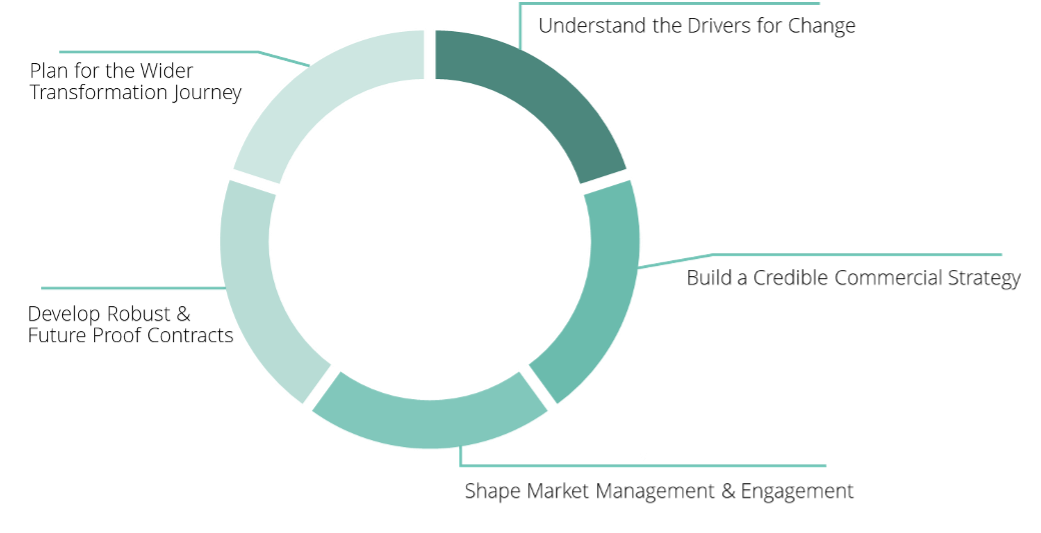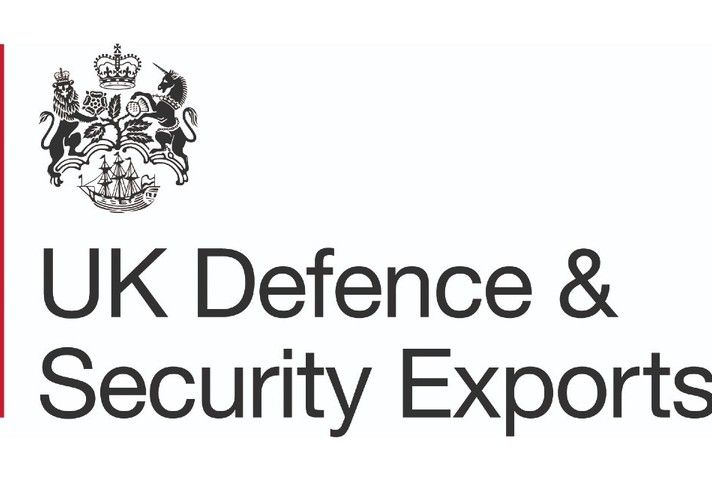
 The great militaries of the future are those with resilient, future-ready digital foundations and who are pulling away from the rest; while those that lack digital transformation expertise and rely on legacy technologies will further behind. With global military third-party IT spend at an all-time high, what does the MOD need to achieve from its commercial agreements with industry partners to continue to deliver improved Defence outcomes?
The great militaries of the future are those with resilient, future-ready digital foundations and who are pulling away from the rest; while those that lack digital transformation expertise and rely on legacy technologies will further behind. With global military third-party IT spend at an all-time high, what does the MOD need to achieve from its commercial agreements with industry partners to continue to deliver improved Defence outcomes?
Both the Central Digital and Data Office (CDDO) Transforming for a digital future: 2022 to 2025 roadmap for digital and data and the Digital Strategy for Defence call out the pressing need to address legacy IT across government with funding earmarked to support this. Underpinning this digital transformation will be a significant step change in the commercial landscape – does the MOD have the structures and strategies in place to manage this?
What is Legacy IT?
Legacy IT has been identified as one of the key barriers to not only Digital but organisational transformation. As per the Digital Strategy for Defence, the MOD’s IT infrastructure and systems, hardware, and related business processes have elements of legacy IT operating within them.
The Cabinet Office has determined that if any of the following points are met, the associated technology is considered legacy as it is:
- An end-of-life product
- Out of support from the supplier
- Impossible to update
- No longer cost-effective; and/or
- Above the acceptable risk threshold
As a Commercial Manager do I….
· Have a comprehensive view of the legacy IT across my estate and associated risks?
· Know when my key legacy IT contracts are expiring and have commercial plans in place to ensure service continuity?
· Have a plan to address capability/skills gaps within my area for commercial, operating model transformation, change and exit/transition functions?
Challenges facing Commercial Legacy Remediation
Whilst the task of delivering commercial change can seem daunting from the outset, a decision to continue to retain legacy IT opens the estate to risk, service continuity complications and does not achieve longer term value for money. Additionally, there are often major security factors to consider with widespread vulnerabilities and cyber concerns across legacy IT estates escalating the threat of attacks and/or falling out of step with compliance or regulatory rules.
Further compounding the issue is that, as legacy IT suppliers’ pivot their businesses to new IT solutions, the legacy support available in the market will reduce over time. Therefore, as market competition decreases, costs increase for re-procuring legacy IT services. At some point a supplier may even decide to no longer support the legacy IT services with the MOD then having to procure costly specialist support before making the inevitable decision to move to the new IT solution.
“By modernising our legacy estate and fully addressing our technical risks, Defence users will be working on robust, interoperable and cost-efficient technology infrastructure”
Digital Strategy for Defence (April-2021)
Once a decision has been taken to remedy the legacy IT services, there are a host of commercial challenges that will likely arise and the MOD needs to be prepared to manage:
 Commercial & Digital Delivery Evolution
Commercial & Digital Delivery Evolution
Since many of the MOD legacy IT contracts have been let there has been a major shift in the digital service design and associated commercial models which can be complex to apply to existing requirements e.g. agile contracting, SaaS, new service integration models etc.
 Concurrent Commercial Activity
Concurrent Commercial Activity
Due to the scale of the legacy IT problem, it is highly likely that the MOD will be running multiple legacy IT remediation procurements at the same time as contracts expire at the same time or the risk of existing services becomes too high. Coordination of this vast supplier landscape is essential.
 Levelling the Playing Field
Levelling the Playing Field
There may be incumbent providers who have been on the MOD estate for a significant period bringing with it issues of a perception of inherent advantage by the wider market, high levels of customisation and Intellectual Property Rights (IPR) issues which need to be de-tangled for procurement.
 Market Unreadiness
Market Unreadiness
If a small number of suppliers have provided a service for a substantial period, do other players in the market have the capability readily available to deploy under new contracts? Are new market entrants prepped to manage MOD contracting complexities e.g. security classification levels and export controls?
 Internal Knowledge Gaps
Internal Knowledge Gaps
The incumbent provider can have such deep roots that it holds all service knowledge and data. How do you leverage existing contractual or exit provisions to extract the information needed to build a comprehensive requirement set?
 Commercial Capbaility Gap
Commercial Capbaility Gap
The scale, complexity and time needed to re-procure mission critical systems, hardware, software, platforms etc. presents a huge challenge in recruiting and retaining this specialist talent.
Legacy IT Remediation: Commercial Critical Success Factors:

Understand the Drivers for Change
There are multitude of factors driving the need for legacy IT remediation across the MOD. They include expiring contracts, a pressing need to align to the Digital Strategy, significant technical/security risks with existing IT or support for legacy IT that is expiring. Knowing the strategic intent of business needs, options and the scale of the transformational journey – whether this root and branch change or just prolonging inefficiencies – is vital in obtaining buy-in across the organisation and to coalesce a sense of purpose.
Build a Credible Commercial Strategy
The Commercial Strategy will need to align to the proposed Delivery Model and ensure robust commercial resilience. It will for example need to consider if the new IT be implemented in a big bang or phased approach and what happens if transition fails. The strategy should also rectify existing legacy IT issues and align to the latest best practice, for example, having outcome-based requirements, greater financial transparency etc.
Shape Market Management & Engagement
Legacy IT remediation offers the MOD the opportunity to shape new commercial ecosystems. There is now an array of CCS Frameworks that can provide legacy IT remediation services and, with the upcoming change in procurement regulations, the MOD has a greater array of routes to market to utilise.
Develop Robust & Future Proof Contracts
New contracts need to be able to provide flexibility for the future. Examples include convergence to the Digital Backbone and to prevent future legacy IT issues arising whether that be supplier lock-in, IPR issues or difficulties during exiting the contract. The MOD should look to utilise new contracting methods appropriate to digital delivery such as ‘agile contracting’. These newer methods aim to close the gap between a contract not accurately reflecting the reality on the ground and managing suppliers. An understanding of whole life costs and funding i.e. dual running, ad hoc upgrades etc. is essential in avoiding ‘commercial cliff-edges’ where emergency action is needed which doesn’t necessarily achieve the best value for money longer term.
Plan for the Wider Transformation Journey
For the MOD to successfully replace and embed new commercial arrangements requires a plethora of supporting capability across the organisation. A new contract/technology can mean significant business change in terms of ways or working/processes and operating model. Having these capabilities working alongside commercial resource will ensure the replacement of legacy IT is a success and likely requires a rethink around resource models.
Key Takeaways
In many cases, an expiring contract(s) can act as the trigger to remedy legacy IT, with organisations suddenly struggling in real-time to deal with the challenges highlighted above as well as yield benefits from the critical success factors.
To rapidly address the churn of expected commercial activity, the MOD should consider proportionality when determining routes to market; are there quicker and faster routes that can be pursued which lead to the same, or better, outcomes e.g. using existing frameworks, pitching the right questions alongside the right opportunities?
Key to a future where legacy IT is not a significant problem is moving to a culture where change is expected and built into designs from the outset and not managed on a reactive basis. Additionally, decisions to appropriately earmark funding to rectify this problem are made quickly to avoid the emergence of ‘burning platforms’ i.e. proactivity not reactivity.
Due to the criticality and time to implement, what may initially seem a simple project can soon become a complex body of work and looking across Public Sector, the MOD is not unique in tackling this challenge. Indeed, the majority of government departments have complex legacy IT remediation projects within the Government Major Projects Portfolio (GMPP) such as HMRC’s Technology Sourcing Programme (TSP), those within Evolve Portfolio at the Ministry of Justice (MoJ) and the Home Office’s Technology Platforms for Tomorrow (TPT). Understanding the lessons learned from these and other programmes can highlight the structures, effort and change needed and MOD colleagues are encouraged to reach out to other departments as well as internal MOD teams with experience. It is evident from the vastness and complexity of the MOD estate that there will be a continued stand-up of major legacy IT remediation programmes in future.
Whilst the issue cannot be understated, the MOD is already driving some fantastic initiatives here such as Commercial X which utilises agile methodologies to procure technologies at pace, the Future Capability Group (FCG) within Defence Equipment and Support (DE&S) which is driving an innovative acquisition ecosystem and the digital twin space where virtual operating environments are built using real-time data to test the resilience of platforms, systems etc. Crucially, the MOD needs to ensure these successes endure and are considered from the outset of legacy IT commercial planning.
The scale and size of the legacy IT issue cannot be underestimated and the MOD needs to be ahead of the global curve for what will be fundamental transformation impacting the success of day-to-day operations and personnel confidence in the technology provided. This is not a side of desk activity, but with the right commercial capability, strategy and planning, the MOD can deliver IT services which protect service continuity, remain secure and achieve value for money.
Secured your pass to DSEI 2023?
© 2023 Deloitte LLP. All Rights Reserved. The contents of this article are confidential and the intellectual property of Deloitte LLP and may not be reproduced, redistributed or passed on to any other person in whole or in part without the prior written consent of Deloitte.
This publication contains general information only, and none of the Deloitte member firms are by means of this publication, rendering professional advice or services. Before making any decision or taking any action that may affect your business, you should consult a qualified professional adviser.
AUTHOR DETAILS

Adnahn Qureshi - Manager aaqureshi@deloitte.co.uk
(pictured) Michael D Clarke - Director michaeclarke@deloitte.co.uk
-
DSEI 2023: Royal Navy To Set Up In Receive Mode, To Support Partnering Against Future Threats
04 Sep 2023 Dr Lee WillettThe UK Royal Navy (RN) will have significant presence at the DSEI 2023 exhibition, which is taking place at ExCeL London on 12-15 September. It is also seeking to grasp the engagement opportunity that ... -
Agile Acquisition & Rapid Delivery in Defence – Resilient Teams Harnessing Digital Means
04 Sep 2023“Technology is an extension of human behaviour” – a quote attributed variously, but traceable to the Canadian philosopher, Herbert Marshall McLuhan. Whilst originally referencing the study of media, t ... -
“Nobody ever stops or intervenes in a poor project soon enough. The temptation is always to ignore or under-report warning signs and give more time for things to improve to avoid revealing bad news, r ...
-
The old adage goes: “plan for failure, but hope for success.” Yet, defence programmes are much too important and complex for static plans prosecuted through hopes and wishes. Defence programmes need t ...
-
How the Next Generation of Performance Fabrics is Overcoming the Age-Old Problem of Inner Condensation
18 Aug 2023When measuring breathable fabrics (ISO11092), the standard international test method is conducted under dry conditions – which uses an inside temperature of 35°c and an outer temperature of 35°c with ... -
Transforming Defence Programme Performance: a Global Endeavour
31 Jul 2023 Ed RobinsonLooking towards Defence and Security Equipment International 2023 (DSEI), it’s important to explore challenges facing major programme delivery and how a new approach to collaboration and partnering is ...

)
)
)
)
)
)

